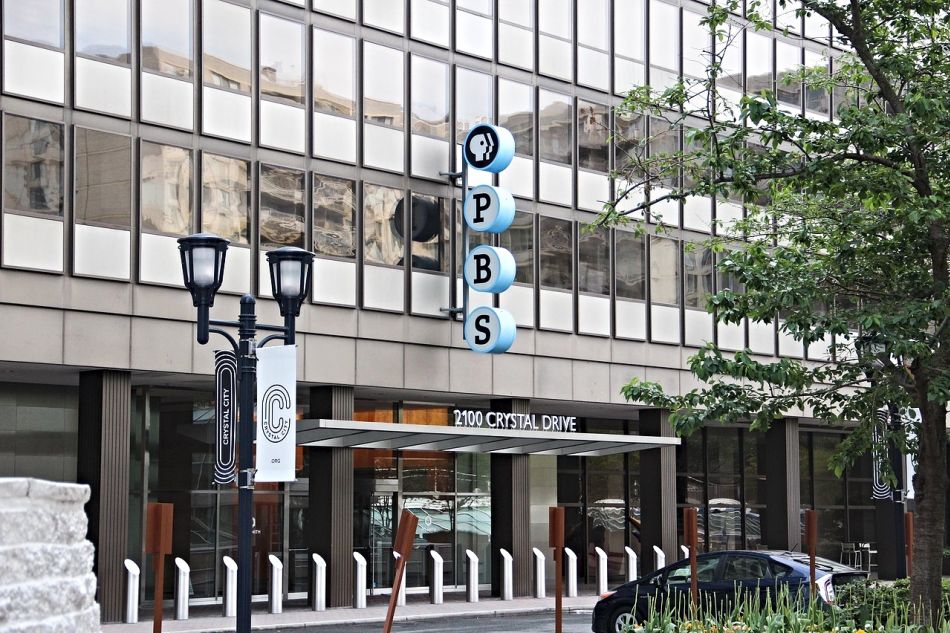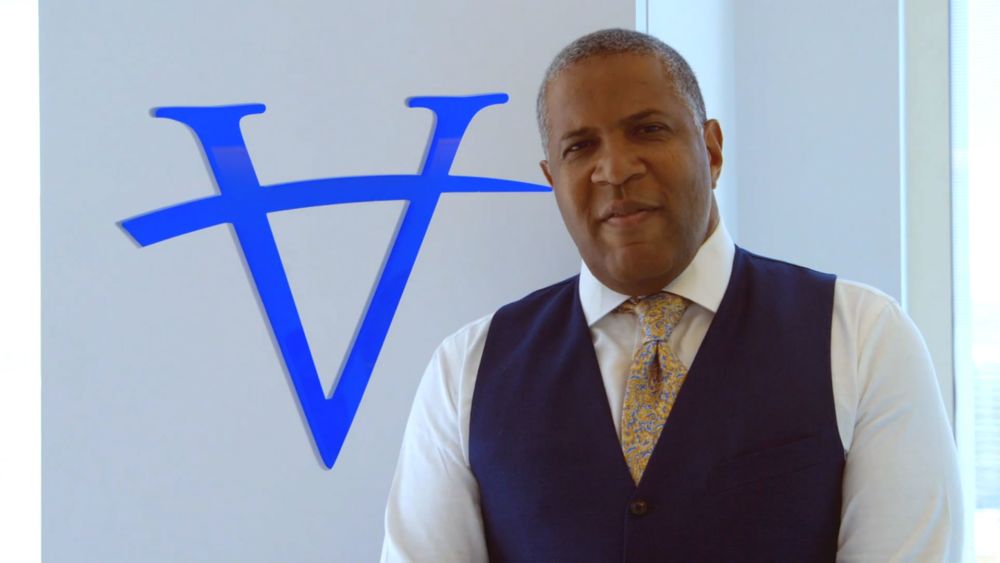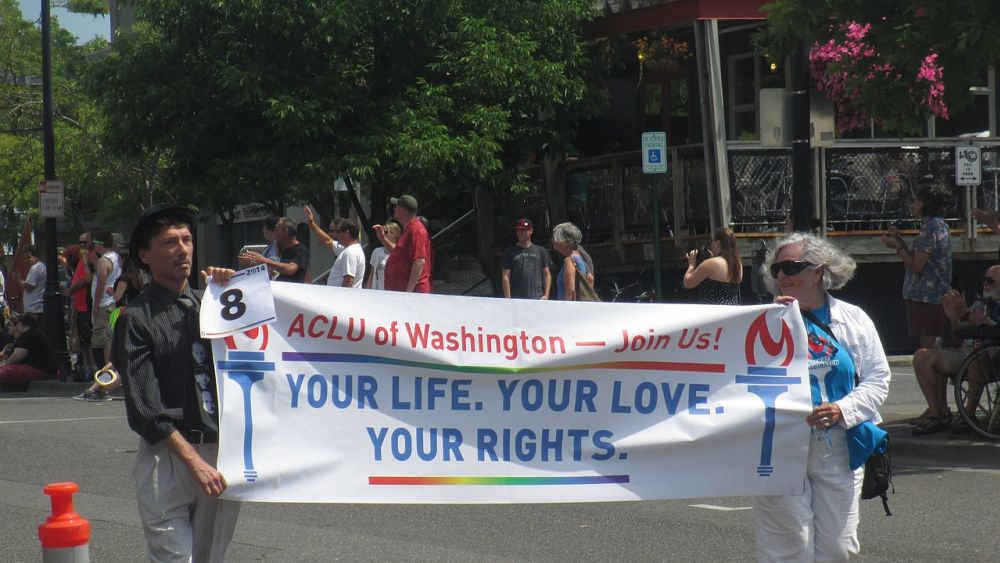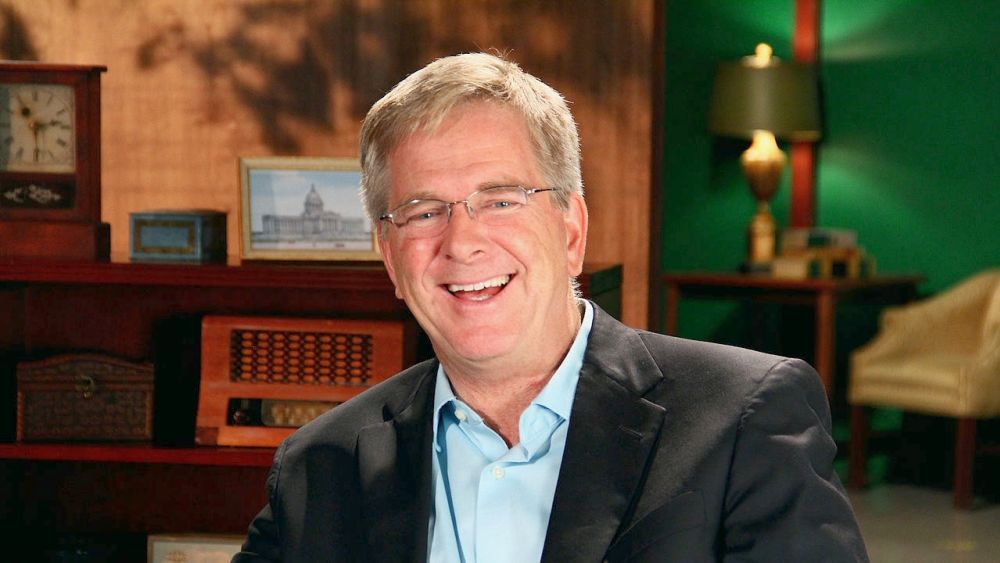The Corporation for Public Broadcasting: Contributing to a More Informed Society
Greggory Moore | Best of Best

image by: Thomson200
Just about the only time the CPB is in the news is when pols make noise about choking off federal funding for public media. But if more people knew the whole story, the conversation might be different.
It was one of those nights you want to wile away with as little effort as possible while not simply dumping it into the rubbish bin of your personal history. TV can be just the tool for the job, if only you happen across one of those gems hidden in the trash heap.
If you go that route, your best bet is to try your luck with the most likely treasure trove of educational or otherwise compelling programming: public television. Stepping down that path, I happened across The Mystery of Matter: Search for the Elements, a three-hour miniseries documenting and dramatizing—with meticulous historical accuracy—the progression of discoveries from the mid 18th century onward that led to our current understanding of chemistry and atomic physics, told by focusing on seven of the key players, most of whom are unknown to the general public (Gregor Mendel and Marie Curie notwithstanding). Informative, enlightening, touching, and even funny, it was an evening perfectly spent.
This is one of innumerable anecdotes that might be told about the unique ways in which the Corporation for Public Broadcasting (CPB) benefits society. Even in the Internet Age, no organization in the United States comes close to facilitating the production and home delivery of so much quality educational content for both adults and children.
The federal government passed the Public Broadcasting Act of 1967 to help ensure that underprivileged folk might be made a little less underprivileged without leaving the comfort of their own homes. "[I]t is in the public interest," the Act reads, "to encourage the growth and development of public radio and television broadcasting, including the use of such media for instructional, educational, and cultural purposes, [… I]t is in the public interest to encourage the development of programming that involves creative risks and that addresses the needs of unserved and underserved audiences, particularly children and minorities."
Today the CPB provides funding for the Public Broadcasting Service (PBS), National Public Radio, and more than 1,400 local public television and radio stations, making programs such as Sesame Street, Frontline, Nova, American Experience, and the PBS NewsHour directly and freely available to virtually every household in the country. Well, not exactly freely: on average Americans are taxed about $1.35 per year to help fund the CPB.
While PBS, NPR, and all public television stations operate independently of the CPB, a core principle of the CPB is to "facilitate the full development of public telecommunications in which programs of high quality, diversity, creativity, excellence, and innovation, which are obtained from diverse sources, will be made available to public telecommunications entities, with strict adherence to objectivity and balance in all programs or series of programs of a controversial nature."
That mission to provide the general public with unbiased, fact-based narrative about our world is one reason why the CPB remains as important in today's modern media landscape as it was in the 1960s.
"I think what is important for public media is to provide viewers who would watch Fox News and MSNBC, coming to a story with their particular viewpoint, with the opportunity to check it against the stories that we're telling," says PBS President/CEO Patricia Harrison. "I know that NPR and PBS, through their editorial standards, make every attempt to tell the story in a fact-based way."
Equally important is the CPB's commitment to children's programming, especially with what Harrison views as the commodification that dominates all other levels of the media landscape.
"Considering that commercial media looks at children's content as a way to sell not only to kids, but to bring their parents in and have that lifelong connection as a consumer, our mission is more important than ever before, in terms of providing high quality content and providing a truly safe place where children can learn," she says, "a place where you can get news and information that really informs, as opposed to titillating or relying on the equivalent of a digital sound bite."
A prime example of how profit motive can come to distort even the most originally well-intended missions is the ironic history of The Learning Channel (TLC). Co-founded in 1972 by NASA and the Department of Health, Education, and Welfare to be what its eventual name implied (it was originally the Appalachian Community Service Network), by the 1990s TLC was drifting away from educational programming, eventually phasing out all programs for children in favor of shows that exploited them, such as "reality TV" about excessively large families (John & Kate Plus 8, 17/18/19 Kids and Counting) and prepubescent pageant contestants (Toddlers & Tiaras, Here Comes Honey Boo Boo).
Public television and radio stations operate on a "private-public partnership" model, with money they raise from individual donations and grants from corporations and foundations (the "private" part) augmented by the CPB (the "public" part). And although over the years a procession of Republican politicians have called for the eradication of government funding of the CPB as means to reduce federal spending, total annual appropriations to the CPB (no more than 5 percent of which can go toward CPB administrative expenses) are somewhere in the neighborhood of 0.00014% of the federal budget.
Of course, the relative pittance of federal funding for the CPB is not in itself a defense of continuing the practice. You cut spending by cutting spending wherever it is not needed, regardless of the size of the cut. One argument typically made in favor cutting CPB funding is that, as the Cato Institute's Trevor Burns wrote in 2012 after presidential hopeful Mitt Romney brought the issue front and center, "our media-rich environment has obviated the need for public broadcasting. Even before the Internet, which provides seemingly unlimited educational and cultural content, cable channels such as Discovery and Bravo had already pushed aside public broadcasting as the premier provider of educational programming. The government should only use the hard-earned money of taxpayers to fund things that would not exist otherwise."
But Harrison argues that the expansion of media has in no way diminished the need for public television and radio.
"Especially in this environment of so many media choices, [public media] are core to our civil society," she says. "And we have to do more, which is why the funding is so important. The reason American public media stays relevant and stays independent is because we have this public-private partnership. But if any part of that partnership fails to come through, it is no longer a viable, vibrant public media service that we're able to provide. […] Technology is going to continue to evolve. Who knows how we're going to be communicating. Maybe it's going to be chips in our head or something. But it's the content that matters, [and] content [has] the ability to either inflame or inform, to tamp down on our intellectual ability or to inspire and create curiosity."
Harrison also points out that the public side of the public-private partnership is particularly important in rural areas, where private money for individual stations is far harder to come by than it is in population-dense media capitals. Moreover, she says, federal funding provides an additional, indirect benefit to the whole of public media.
"Stations in [rural] areas don't have the same ability [as their urban counterparts] to raise non-federal funds, so the federal appropriations becomes extremely important," she says. "And then for larger stations like WGBH [i.e., Boston's main public television station], the federal appropriation is really that imprimatur that enables them to go to foundations and say, 'Look, this is the part that we have through the CPB, and we need your money to serve the people in the greater Boston area on a variety of levels, whether it's education, journalism, or entertainment."
Despite the calls from the right to cut federal funding, Harrison is encouraged by the current milieu.
"[Politically], in terms of appropriations I think we are probably in the best environment we've been in," she says. "Against the backdrop of commercial media and what their kids are watching and accessing via the Internet, people are looking more and more for a place where they can trust the content. They don't have to agree with the content, but they trust it because it's transparent and it's fact-based."
Part of what helps the CPB maintain its transparency and lack of partisanship is the fact that by law the CPB is governed by a nine-member board of directors, no more than five of whom may belong to any one political party, and all of whom are selected by the U.S. president and subject to Senate confirmation.
The internal mechanisms at the CPB to keep boardmembers from pressing political agendas were on display in 2005, when employees at PBS and NPR complained that the CPB was pushing a conservative agenda under the leadership of CPB Board Chair Kenneth Tomlinson, who unilaterally commissioned a fellow Republican to conduct a $10,000 study of alleged bias in the PBS show NOW with Bill Moyers, among other partisan moves. Tomlinson resigned after a CPB investigation found that he "violated statutory provisions and the Director’s Code of Ethics by dealing directly with one of the creators of a new public affairs program during negotiations with the Public Broadcasting Service (PBS) and the CPB over creating the show," and that he applied “political tests [as] major criteria […] in recruiting a President/Chief Executive Officer (CEO) for CPB, which violated statutory prohibitions against such practices."
More recently, the CPB took steps to ensure that an ever broader range of voices is represented in public media by creating a Diversity and Innovation Department, for which (as Harrison explains it) a certain amount of money is set aside "to ensure that more stories talking about an increasingly diversified America would be on primetime (i.e., PBS), but also to other entities, online, and through the world."
Another CPB program contributing to a more diverse and informed society is American Graduate: Let's Make It Happen!, a nationwide public media commitment to bringing awareness to and reducing high-school dropout rates, which are particularly acute among low-income, disable, and minority students, communities in which roughly three out of every 10 students fails to earn a diploma.
In October 2013, a Johns Hopkins study of American Graduate's first 18 months found that the initiative "conclusively demonstrates that local public media stations have a vital and unique role in helping communities end America’s high school dropout crisis. The evidence […] shows that the initiative succeeded, in public media stations’ ability to (1) harness station assets and mobilize a community to solve a pressing local issue; (2) build informed, solution‐oriented coalitions; and (3) give teachers and youth a voice. […] The initial successes set the stage for sustainable on-going work and show that American Graduate has the potential for long-term impact through its public media stations, in partnership with each community they serve."
Harrison feels one of the reasons some people don't support continued government funding of the CPB is a lack of understanding.
"Whenever we are attacked, I'd like to say that it's because we are not communicating exactly how much we do," she says. "We don't have a marketing approach for public media; we don't have the funds for that. So how do you tell the public-media story? […] I'd like to move beyond the idea that people are trying to kill us and talk about why we need increased funding so we can do the job that is required in the America of our time. […] I think in this very disruptive stage [of media development], which shows no sign of abating, public media always has to return to its mission—which is evergreen—and look at ways in which we can serve the American people."
About the Author
Except for a four-month sojourn in Comoros (a small island nation near the northwest of Madagascar), Greggory Moore has lived his entire life in Southern California. Currently he resides in Long Beach, CA, where he engages in a variety of activities, including playing in the band MOVE, performing as a member of RIOTstage, and, of course, writing.
His work has appeared in the Los Angeles Times, OC Weekly, Daily Kos, the Long Beach Post, Random Lengths News, The District Weekly, GreaterLongBeach.com, and a variety of academic and literary journals. HIs first novel, The Use of Regret, was published in 2011, and he is currently at work on his follow-up. For more information: greggorymoore.com

Introducing Stitches!
Your Path to Meaningful Connections in the World of Health and Medicine
Connect, Collaborate, and Engage!
Coming Soon - Stitches, the innovative chat app from the creators of HWN. Join meaningful conversations on health and medical topics. Share text, images, and videos seamlessly. Connect directly within HWN's topic pages and articles.
















